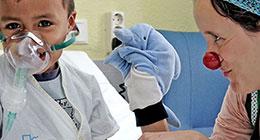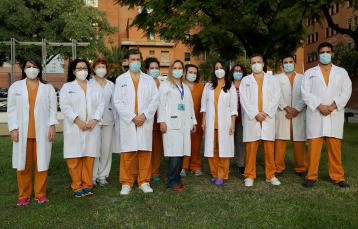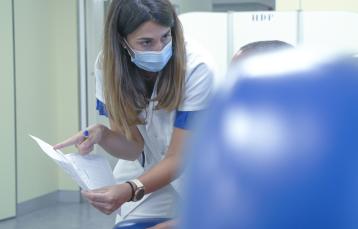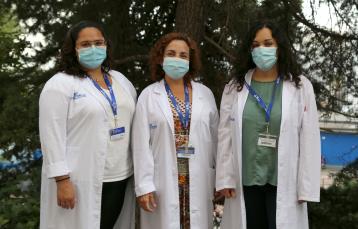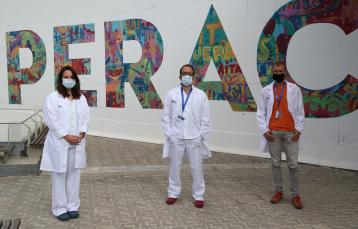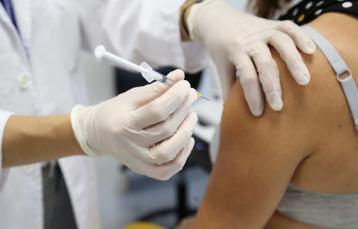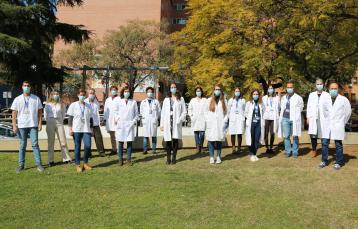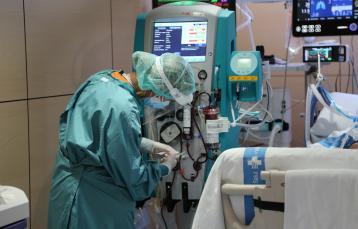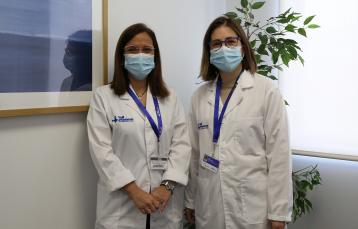An international collaborative clinical trial, in which Vall d'Hebron participates, and coordinated by the University Hospital of Tours (France), demonstrates that the prone position, that is, placing the patient face down, improves the evolution of patients with severe COVID-19 and treated with high-flow oxygen therapy. Specifically, it reduces the composite outcome of the sum of the need for intubations and the mortality ratio. The findings has been published in The Lancet Respiratory Medicine.
High-flow oxygen therapy is applied when there is severe acute respiratory failure, in this case, due to COVID-19. The benefit of placing patients in prone position to try to improve breathing in these intubated ICU patients has been known for more than ten years. However, until now there has been no scientific evidence of the efficacy of this technique in non-intubated patients, which is especially important during the peaks of the pandemic when there may be a shortage of ventilators. "This is the first major study to analyse the benefits of a change of position in awake patients who do not need a ventilator, i.e. who breathe spontaneously on their own, as part of the treatment of COVID-19 patients", says Dr. Oriol Roca, medical coordinator of the ICU at Vall d'Hebron University Hospital and researcher in the Shock, Organ Dysfunction and Resuscitation (SODIR) research group at Vall d'Hebron Research Institute (VHIR). Dr. Roca was one of the researchers who participated in the international study.
The trial involved 1,126 patients admitted between April 2020 and January 2021. Half were part of the control group, who were treated with the usual protocol, and the other half were included in the experimental group, who were positioned in prone position for at least one hour a day, in a minimum of two 30-minute sessions, and with an average of 5 hours a day.
In the control group, 46% of patients required intubation or had a fatal prognosis up to 28 days after inclusion in the study. This percentage was reduced to 40% among patients in the experimental group, who had spent time in prone position. That's not all, as all breathing indicators improved greatly already during the first session - averaging 3 hours - and the improvement maintained when returning to the supine position. Avoiding intubation reduces the risk of intubation complications and also has the collective benefit of reducing the need for ventilators, one of the least available devices in many countries.
In addition, among those who were in prone position for at least eight hours a day, only 17% of cases ended in intubation or death, compared to 48% in those who spent less than this time. Thus, it appears that there may be a relationship between the number of hours spent in prone position and improved clinical prognosis.
These results open up numerous research perspectives, such as the evaluation of long-term benefits, factors favouring good tolerance to long prone sessions, factors predicting the success of the technique and its study in other lung infections in addition to COVID-19.
The study involved the collaboration of 42 centres in six countries: Spain, France, Canada, Mexico, Ireland and the United States. In Spain, two centres participated in the study: Vall d'Hebron University Hospital and Hospital del Mar.
A large study with a major clinical impact
The study is based in a very large patient sample, which allows for more easily generalisable results. In addition, the international and multicentre approach over such a long period of time has made it possible to obtain results much more quickly and to test the efficacy of prone position during several waves of the COVID-19 in different countries, as well as the difference in response as a function of the number of hours patients remain in the pron position.
The study concludes that the use of this support measure is safe and very easy to apply and does not incur any costs, directly improving the prognosis for patients. There are no associated risks related to false confidence in a one-off increase in oxygenation associated with the use of prone position resulting in a delay in the decision to intubate those patients who do not progress favourably with high-flow oxygen therapy, nor an increase in the frequency of side effects compared to the non-prone group.
"We therefore propose a change in current clinical practice to incorporate this treatment as part of the medical routine for COVID-19 patients with acute respiratory failure requiring high-flow oxygen therapy", concludes Dr. Roca.









